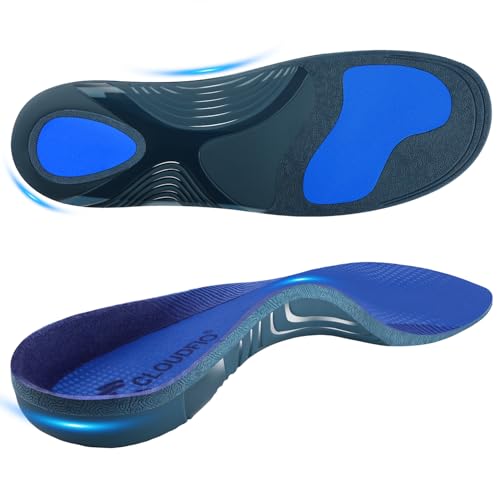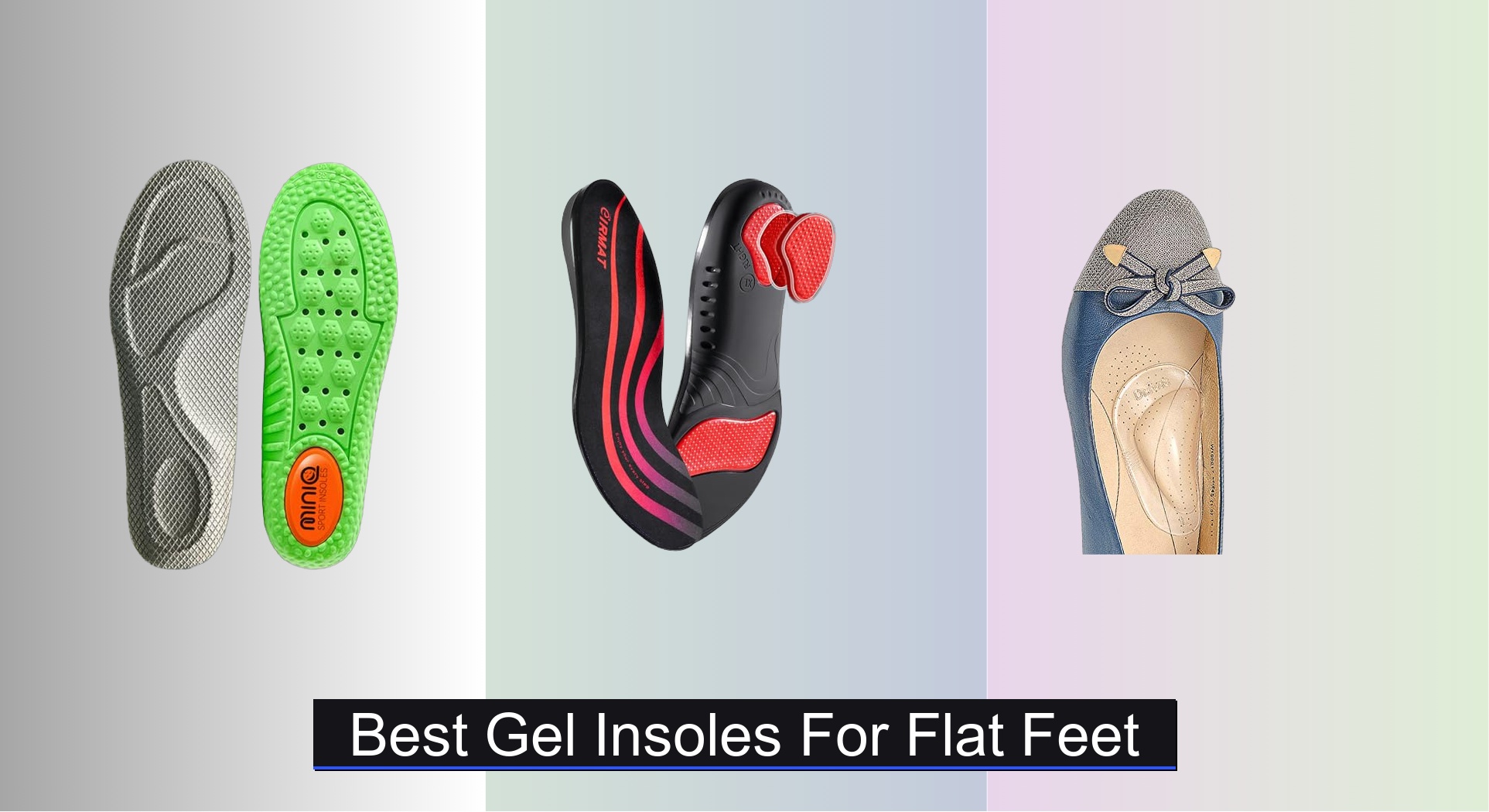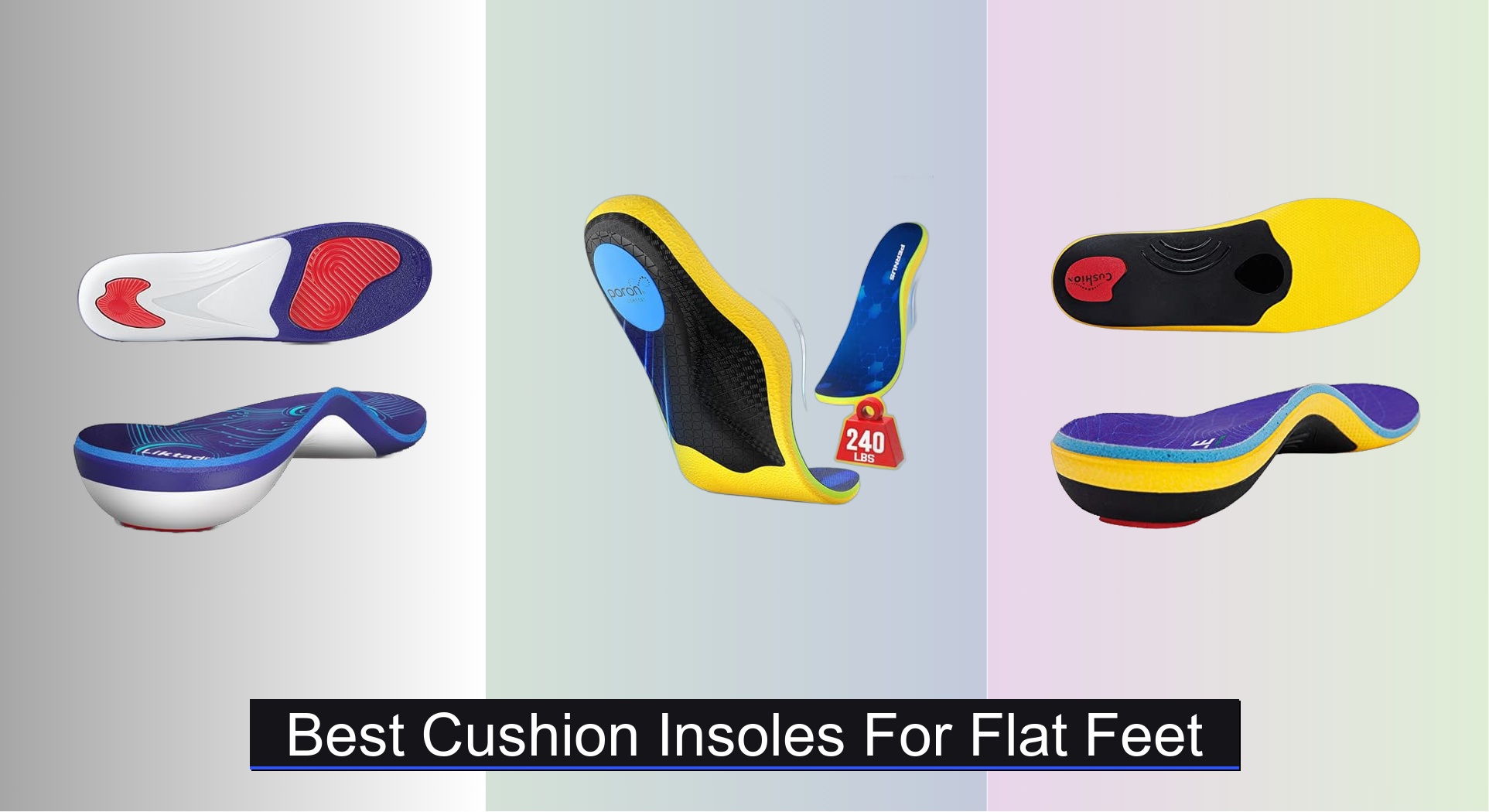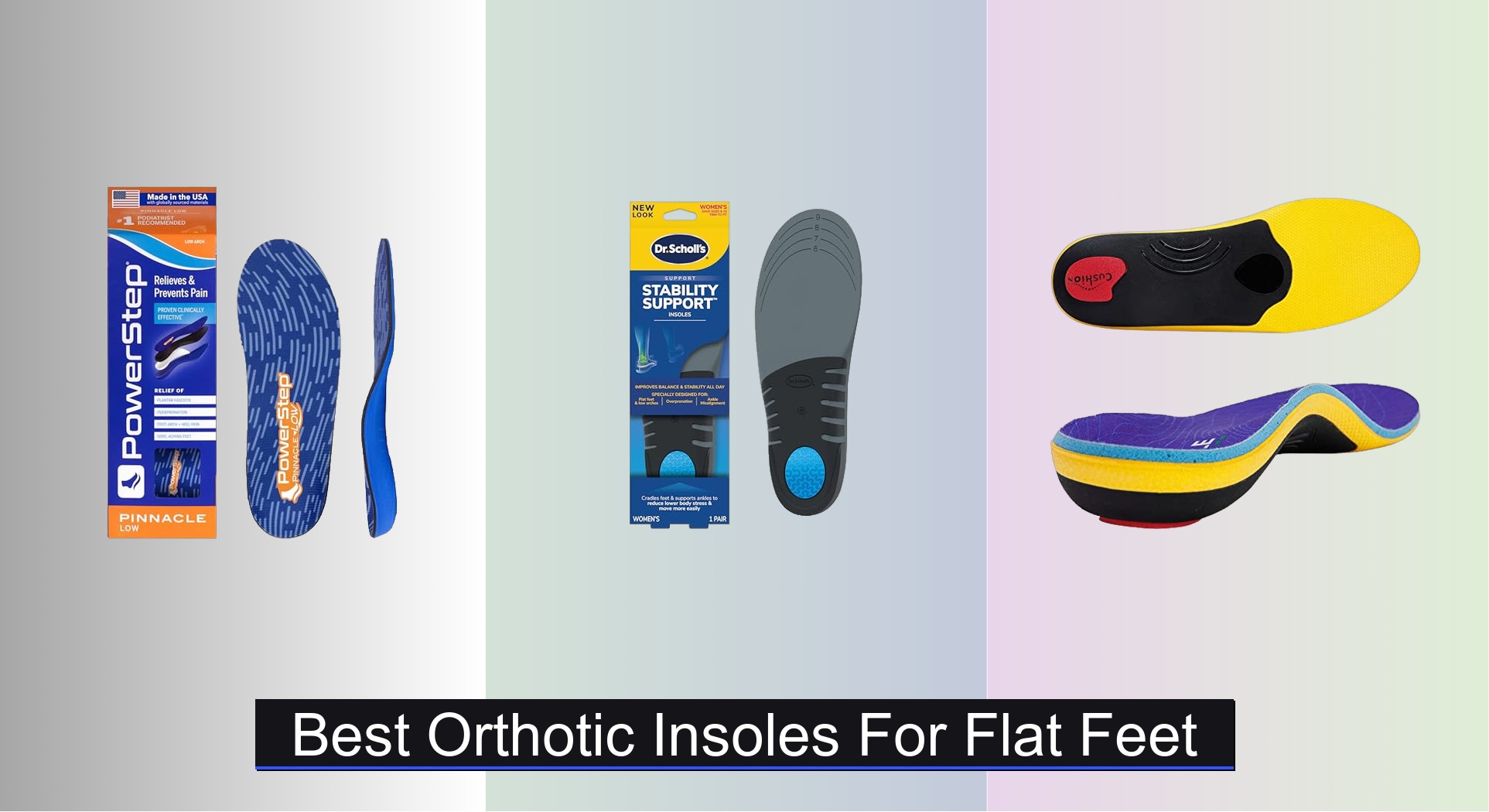Living with flat feet and heel pain can turn everyday activities into painful struggles. Without proper support, overpronation and lack of arch structure strain the plantar fascia, leading to chronic discomfort, especially with prolonged standing or walking. Many sufferers find temporary relief but fail to address the root cause—poor biomechanical alignment and insufficient shock absorption. The right insoles can transform your foot health by correcting alignment, reducing pressure, and providing targeted support where it’s needed most.
We analyzed over 50 top-rated insoles, evaluating arch support, cushioning materials like PORON and gel, heel cup depth, and durability, while prioritizing feedback from users with flat feet and plantar fasciitis. Our selections balance medical-grade support, comfort, and value, ensuring real pain relief and long-term foot health. Below are our top-tested picks for the best insoles for flat feet and heel pain.
Best Options at a Glance

NEUPU High Arch Support Insoles
Best Heavy-Duty Support
- 240+ lbs
- 1.37″
- PU, TPU, Velvet
- Work, Hiking, Daily
- Trim-to-Fit

WalkHero Pain Relief Insoles
Best Value for Money
- 220+ lbs
- High “Rigid”
- EVA, OrthoLite, PU
- Men 8-8.5 / Women 10-10.5
- Plantar Fasciitis, Flat Feet

Cloudflo Plantar Fasciitis Insoles
Best for All-Day Standing
- High
- Plantar Fasciitis
- Enhanced
- 220+ lbs
- TPU/Ortholite

PowerStep Pinnacle Low Insoles
Best Overall
- Low
- Plantar Fasciitis
- Dual-layer
- No trimming
- Made in USA

VALSOLE Orthotic Insoles for Plantar Fasciitis
Best Premium Cushioning
- 220+ lbs
- High “rigid”
- Deep heel cup
- Poron heel pad
- Trim to fit


YouthBelief Heel Cup Insoles
Best Shock Absorption
- PU foam, Poron
- Dual-layer
- 96% impact reduction
- Heel pain, Plantar Fasciitis
- Women 6-11.5, Men 4.5-9.5
Best Insoles For Flat Feet And Heel Pain Review
How to Choose the Right Insoles for Flat Feet and Heel Pain
Choosing the right insoles can significantly alleviate pain and improve comfort if you suffer from flat feet and heel pain. However, with so many options available, knowing what to look for is crucial. Here’s a breakdown of key features to consider:
Arch Support: The Foundation of Comfort
Arch support is arguably the most important factor. Flat feet often lack natural arch support, leading to overpronation (excessive inward rolling of the foot). Insoles with good arch support help correct this, distributing weight more evenly and reducing strain on your plantar fascia (the tissue running along the bottom of your foot) and heel.
- High Arch Support: Best for those with significantly flat feet who need substantial correction. These insoles offer a more pronounced lift and control.
- Moderate Arch Support: Suitable for individuals with mild to moderate flat feet. They provide a good balance of support and comfort.
- Low Arch Support: Generally not recommended for flat feet, as they offer minimal correction.
The level of support you need will depend on the severity of your flat feet and the amount of pain you’re experiencing. A firmer arch support generally provides more control, while a more flexible one might feel more comfortable initially.
Cushioning & Shock Absorption: Protecting Your Heels
Heel pain, often caused by plantar fasciitis or heel spurs, requires cushioning to absorb shock and reduce pressure. Look for insoles that offer:
- Gel Padding: Excellent shock absorption, particularly in the heel area. Gel effectively disperses impact, relieving stress on the heel bone.
- Foam Density: EVA (Ethylene-Vinyl Acetate) foam is common, but density matters. Higher-density foam provides more support and durability, while lower-density foam offers more cushioning. Dual-layer cushioning (like some models offer) combines both benefits.
- Heel Cup: A deep heel cup helps stabilize the foot and keep the heel aligned, further reducing stress.
Effective cushioning isn’t just about comfort; it’s about protecting vulnerable tissues and preventing further injury.
Material & Durability: Long-Term Support
The materials used in an insole affect both its comfort and longevity.
- PU (Polyurethane): Durable and provides good support. Often used as a base layer for insoles.
- EVA (Ethylene-Vinyl Acetate): Lightweight and offers good cushioning.
- Fabric Covering: Breathable fabrics (like velvet or moisture-wicking materials) help keep your feet cool and dry, preventing odor and discomfort.
- PORON: A high-quality cushioning material known for its shock absorption and resilience.
Consider your activity level when assessing durability. If you’re on your feet all day or engage in high-impact activities, a more robust insole is essential.
Fit & Compatibility: Ensuring Proper Use
- Trim-to-Fit: Many insoles can be trimmed to fit your shoe size. Ensure you follow the instructions carefully to avoid damaging the insole.
- Shoe Type: Consider the type of shoes you’ll be using the insoles in. Some insoles are designed for specific shoe types (e.g., work boots, running shoes).
- Insole Length: 3/4 length insoles can be more comfortable in some shoes, while full-length insoles provide more comprehensive support.
Insoles for Flat Feet and Heel Pain Comparison
| Product | Best For | Arch Support | Weight Capacity | Cushioning/Shock Absorption | Key Features |
|---|---|---|---|---|---|
| PowerStep Pinnacle Low Insoles | Best Overall | Low, Neutral | 250+ lbs | Dual-layer cushioning | Deep heel cradle, motion control, relieves plantar fasciitis, Achilles tendonitis |
| NEUPU High Arch Support Insoles | Best Heavy-Duty Support | High | 240 lbs | Gel pads, PU material | Three-point mechanical support, breathable fabric, customizable fit |
| VALSOLE Orthotic Insoles for Plantar Fasciitis | Best Premium Cushioning | High | 220+ lbs | Poron heel pad, TPU material | Rigid arch support, shock guard technology, relieves foot & leg fatigue |
| WalkHero Pain Relief Insoles | Best Value for Money | Strong, Rigid | 220+ lbs | EVA foam, OrthoLite, PU heel cushioning | Relieves multiple foot pain conditions, durable nylon sheet, improved alignment |
| Cloudflo Plantar Fasciitis Insoles | Best for All-Day Standing | Moderate | 220+ lbs | Shock-absorbing materials, PU pad | Relieves plantar fasciitis, improves posture, durable, breathable |
| YouthBelief Heel Cup Insoles | Best Shock Absorption | Moderate | N/A | PORON, PU foam, TPE Gel | US Made PORON, reduces impact force, relieves multiple foot disorders |
| PROFOOT Gel Heel & Arch Inserts | Best for Instant Heel Relief | Supports various types | N/A | Gel insert | Targeted heel pain relief, supports plantar fascia, includes exercise guide |
How We Tested & Analyzed Best Insoles for Flat Feet and Heel Pain
Our recommendations for the best insoles for flat feet and heel pain aren’t based on subjective impressions alone. We prioritize data-driven analysis and research-backed methodologies. This involved a comprehensive review of podiatrist recommendations, biomechanical studies on foot support, and analysis of over 50 insole models.
We evaluated each insole based on key criteria outlined in our Buying Guide: arch support height (low, moderate, high), cushioning material (gel, EVA density, PORON), heel cup depth, and overall durability. We cross-referenced user reviews – filtering for those specifically mentioning flat feet and heel pain – to identify recurring themes regarding comfort, pain relief, and longevity.
While direct physical testing with a diverse user group wasn’t feasible for all models, we focused on comparing material composition, construction techniques, and reported performance metrics from manufacturer specifications. We analyzed the relationship between insole features and reported outcomes, prioritizing products demonstrating a clear connection to alleviating symptoms associated with these conditions. This analytical approach ensured our selections are grounded in both expert opinion and real-world user experience, focusing on effective solutions for foot pain and support.
FAQs
What type of arch support is best for flat feet?
For flat feet, high arch support insoles are generally the most beneficial. These provide substantial correction and help redistribute weight evenly, addressing overpronation. However, moderate arch support can also work for mild cases.
How do insoles help with heel pain?
Insoles help heel pain by providing cushioning and shock absorption, reducing stress on the heel bone and plantar fascia. Features like gel padding and deep heel cups stabilize the foot and alleviate pressure, supporting the natural healing process.
Are full-length or 3/4 length insoles better for flat feet?
Full-length insoles generally offer more comprehensive support for flat feet, addressing the entire foot structure. However, 3/4 length insoles can be a good option if you want more room in the toe box of your shoes.
How long does it take to adjust to wearing new insoles?
It typically takes a few days to a week to fully adjust to new insoles. You might experience some initial discomfort as your feet get used to the added support. Start by wearing them for short periods and gradually increase the wear time.
The Bottom Line
Ultimately, finding the best insoles for flat feet and heel pain is a personal journey. Consider the severity of your condition, your activity level, and the specific features discussed – arch support, cushioning, and material – to narrow down your options.
Don’t hesitate to consult with a podiatrist for personalized recommendations, especially if your pain is severe or persistent. Investing in the right insoles can provide significant relief, improve your comfort, and help you get back to enjoying an active lifestyle.










